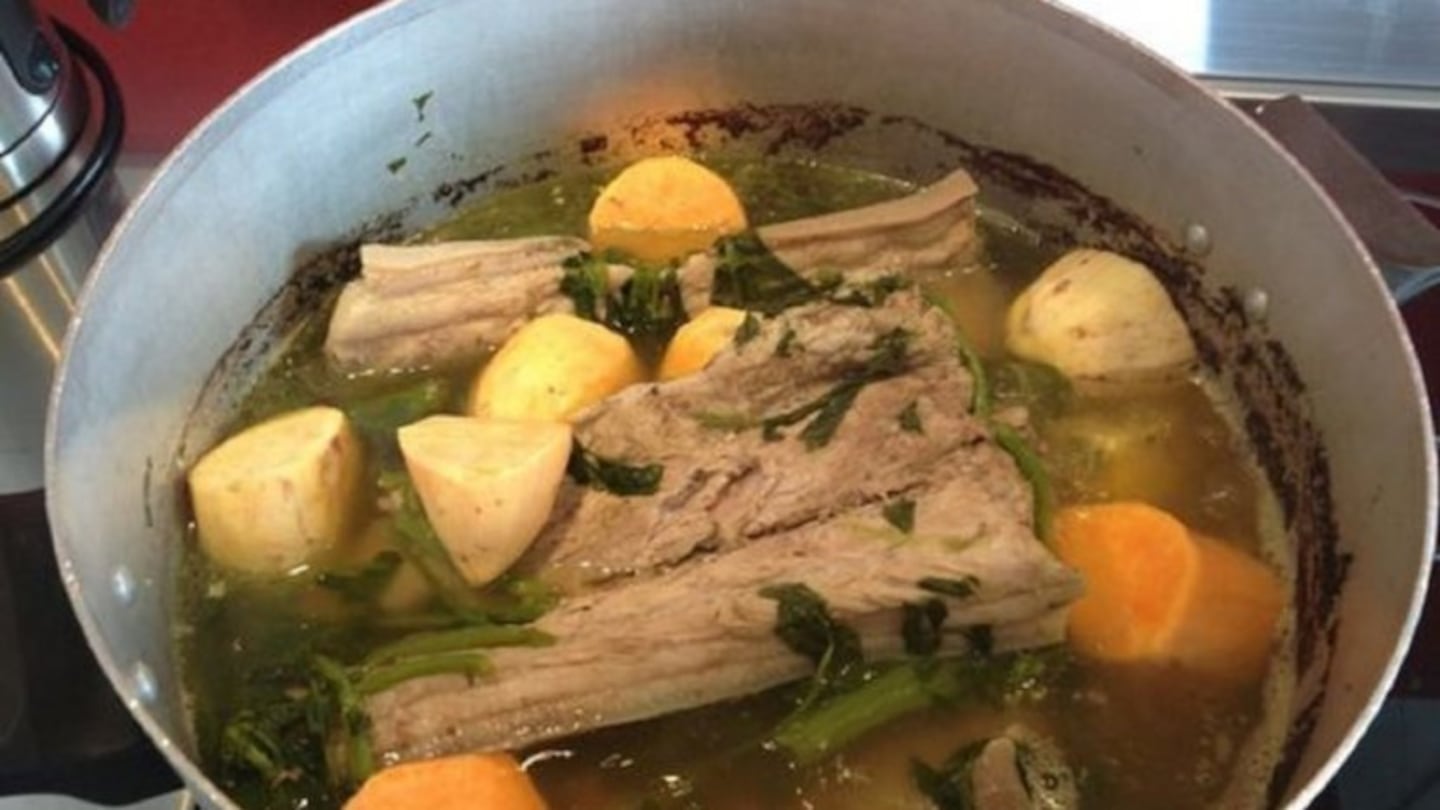Boil-up is a well-known dish among New Zealanders so much so that recipes are listed on websites like New World, Countdown and the NZ Heart Foundation.
From the type of meat and vegetables used, to the cooking process of the boil-up and even the condiments used which are considered ‘standard’ are actually varied and unique from whānau to whānau.
2013’s Marae Kai Masters winning team member and one of Tu Teao Marae head of the kitchen Phillipa Moses said boil-up is about using what you have available.
“You know that for my boil-up we have wild pork, pork bones and bacon bones, kumara, rīwai and doughboys and I like to add pumpkin in the same pot,”
“For the greens, my preference is watercress, then puha and cabbage, but because of the prices of things going up I’ve heard of people using silverbeet but mixing it with other greens to soften the flavour.”
Moses said that wild pork stands alone in the dish whereas bacon bones are accompanied by sausages and she doesn’t eat brisket because of the amount of fat but her partner does.
“Now that we are in kamokamo season I like cooking that as well but I cook that off to the side in another pot.”
Combination pairing of ingredients
Professional Chef, Hall of fame recipient and classical Māori kai revivalist for New Zealand Joe Mcleod deeply understands the history of boil-up and has unlocked a list of boil-up cheat code combinations.
Mcleod said with the introduction of Europeans and their new cooking methods and utensils there was a movement of Māori from hangi the pot.
“There weren’t many pots back in that day; the Irish were the main influence in introducing Māori to boil-up and Māori latched onto boil-up very fast.”
“Back then it was pikopiko or watercress and introduced pork and beef to Māori; Māori also used kaimoana, a normal boil-up would be fish heads, onions and watercress.”
Through many meals of testing McLeod said that there is a combination pairing of ingredients that complement each other.
“For farm pork you use watercress, if you have wild pork then pikopiko is the one and for feral pork (pigs that are half wild and domestic) use Puha.”
Other renditions of boil-ups include poroporo leaves and brisket in Taranaki boil-ups and the addition of cream in Te Tai Tokerau boil-up.
Other ingredients include chicken frames, broccoli, spinach, bok choi, brussels sprouts, coriander, garlic, ginger, carrots, mutton bird, and soy sauce.

